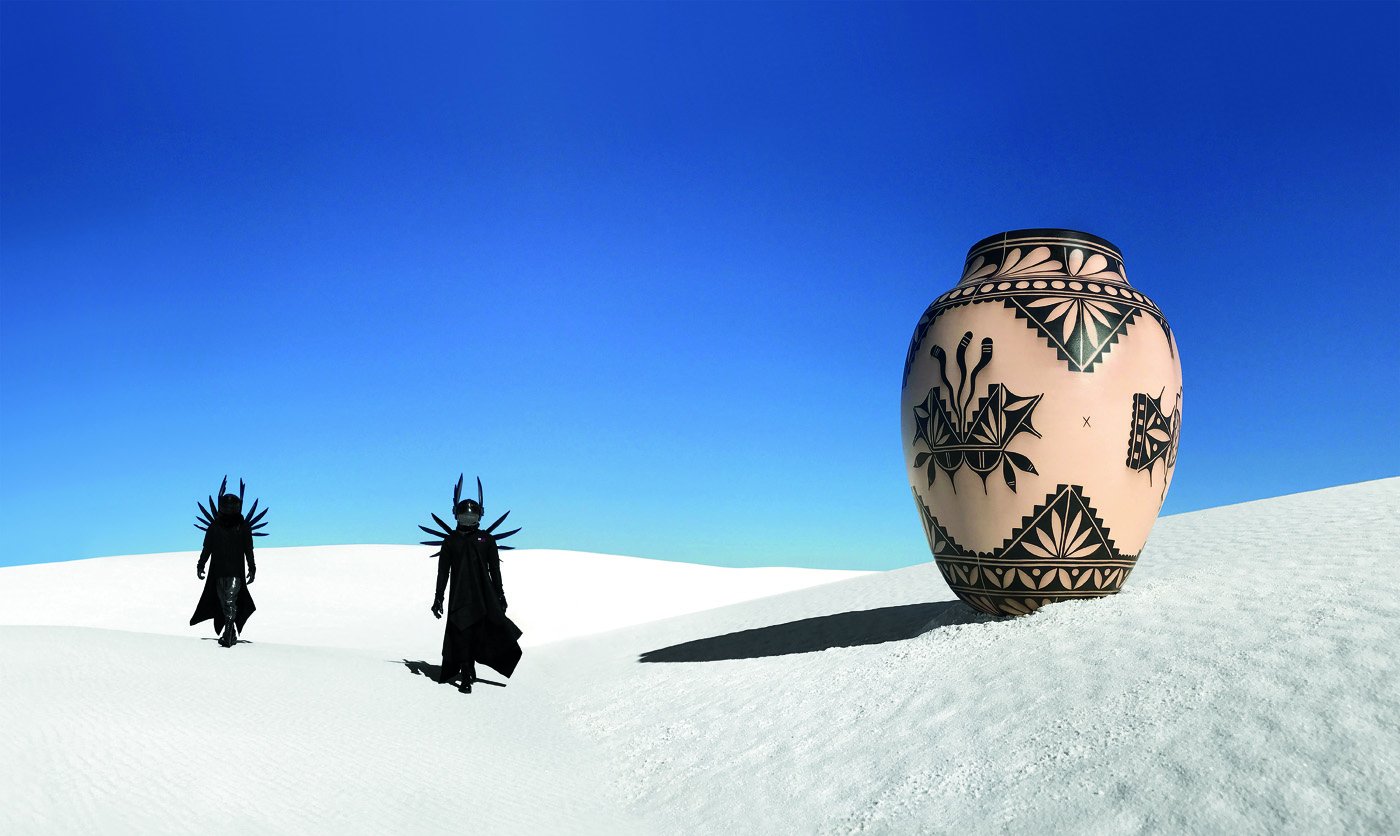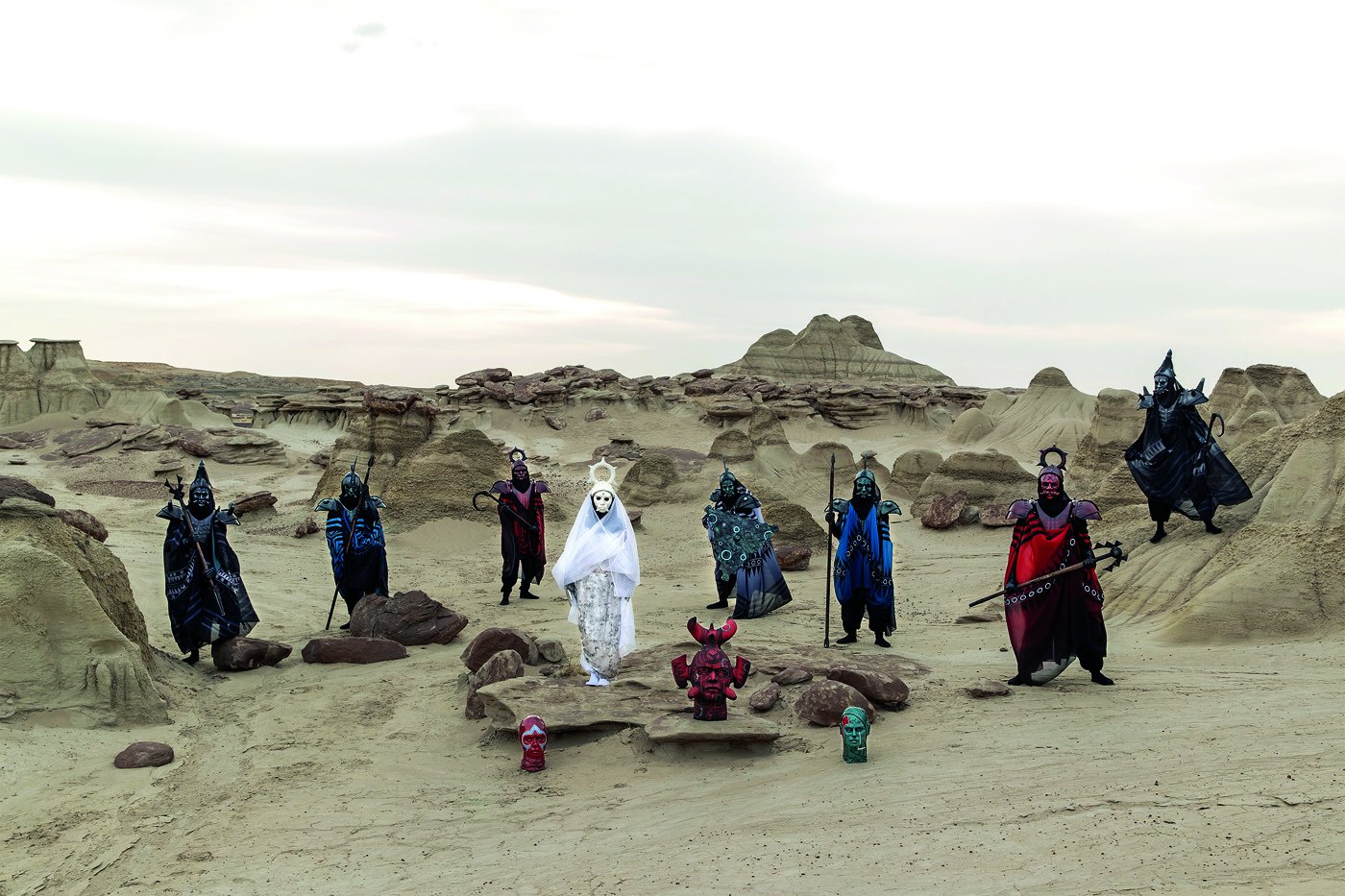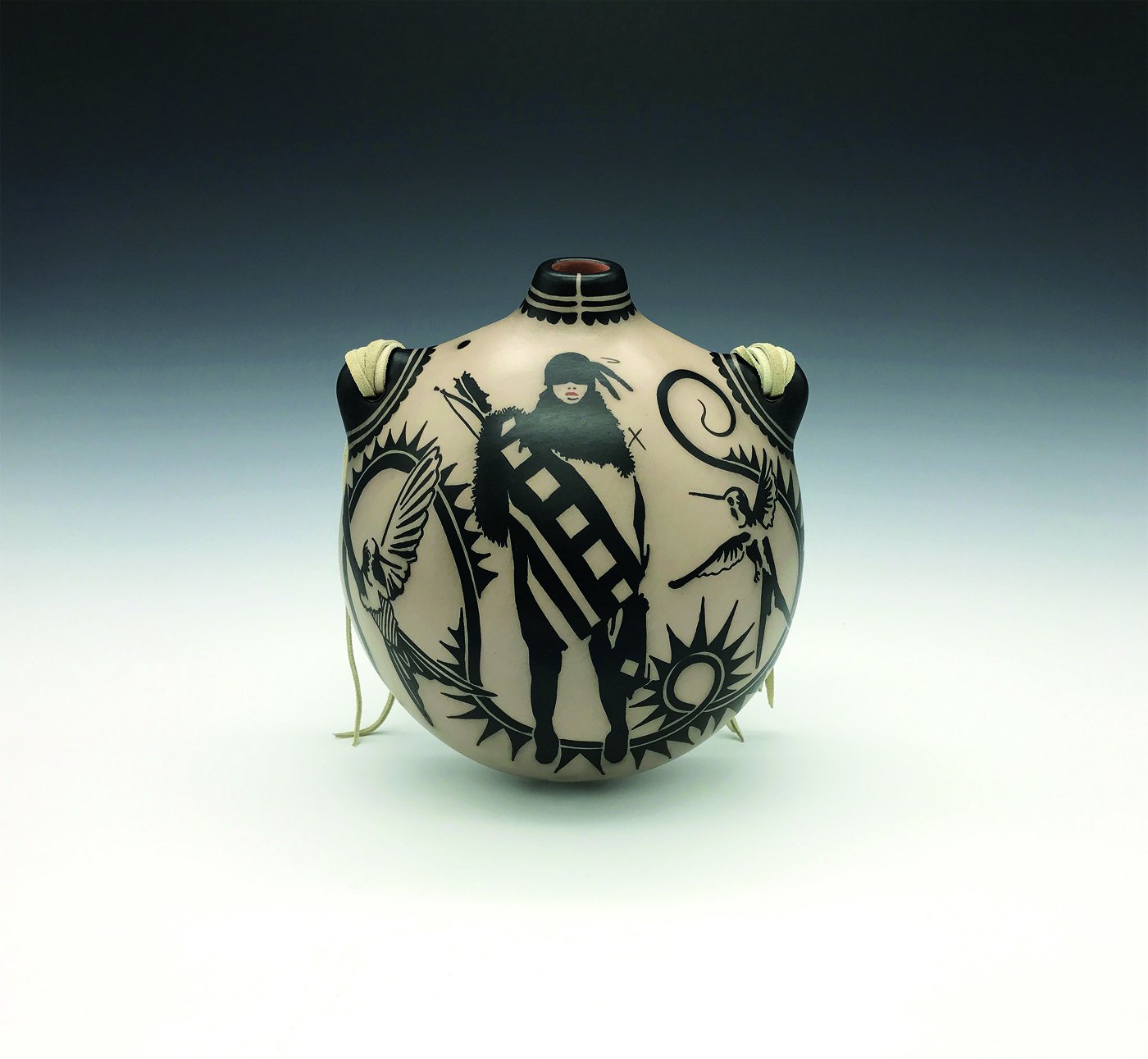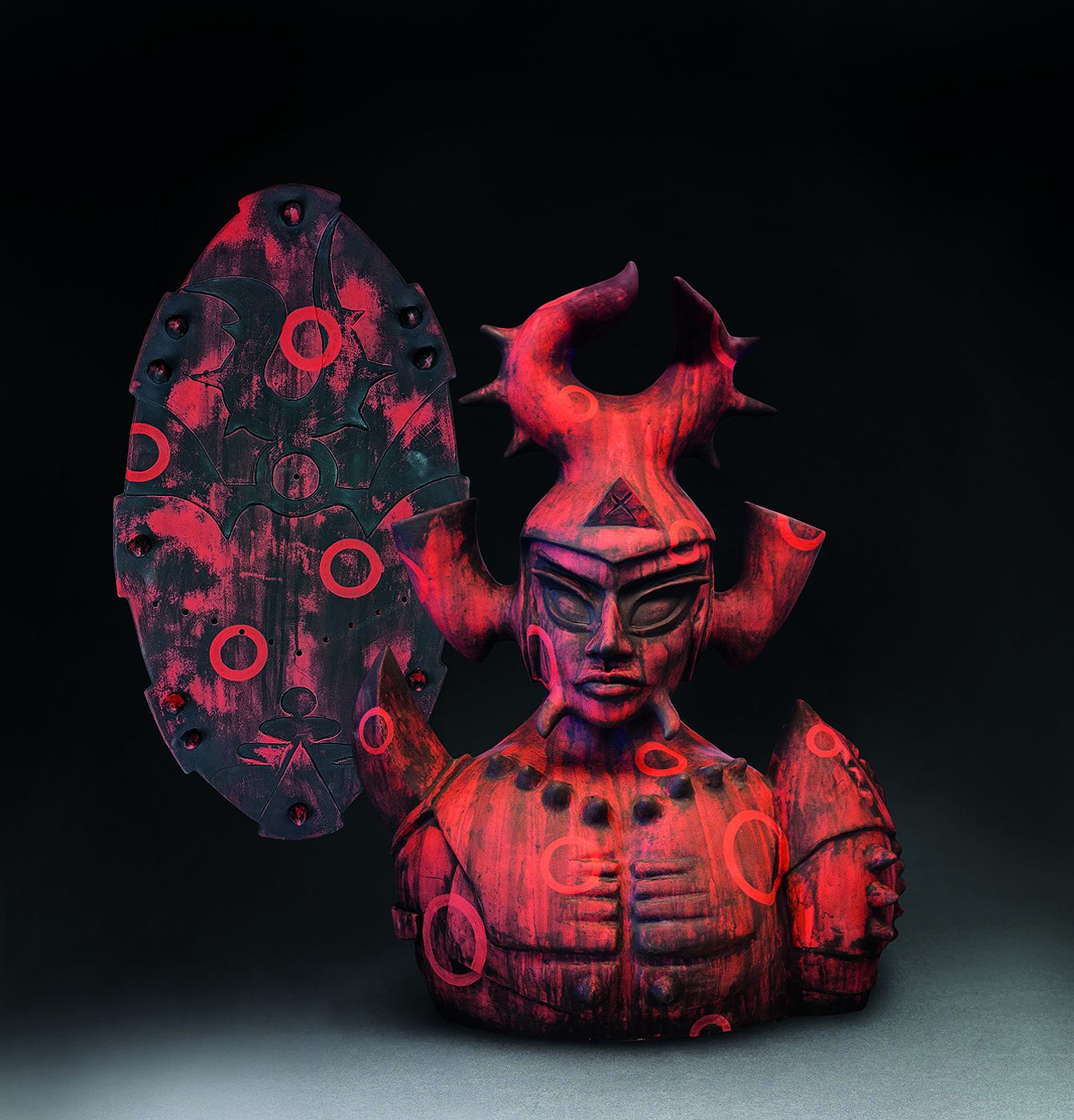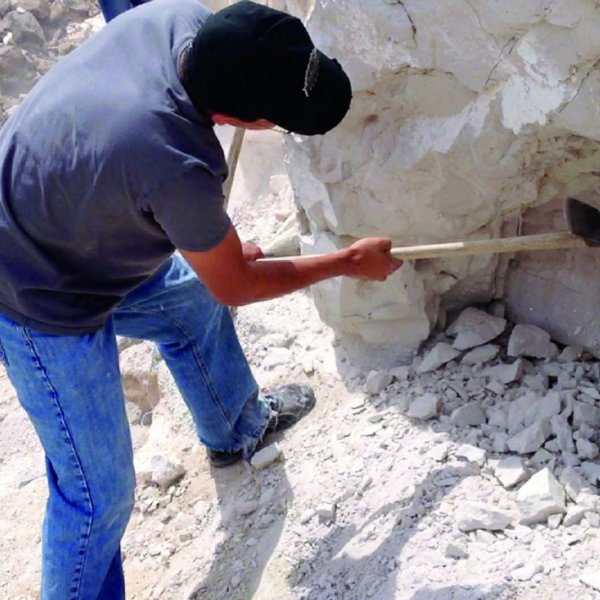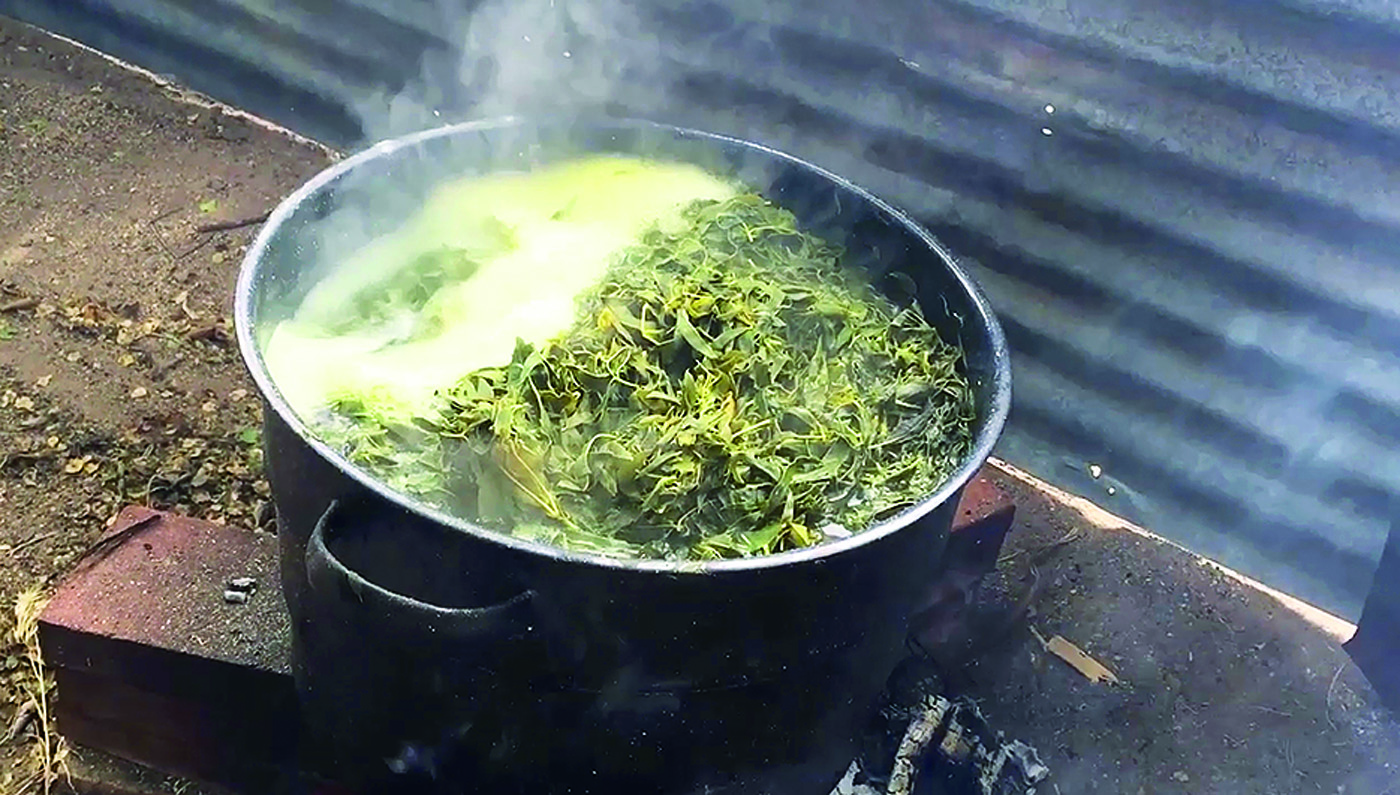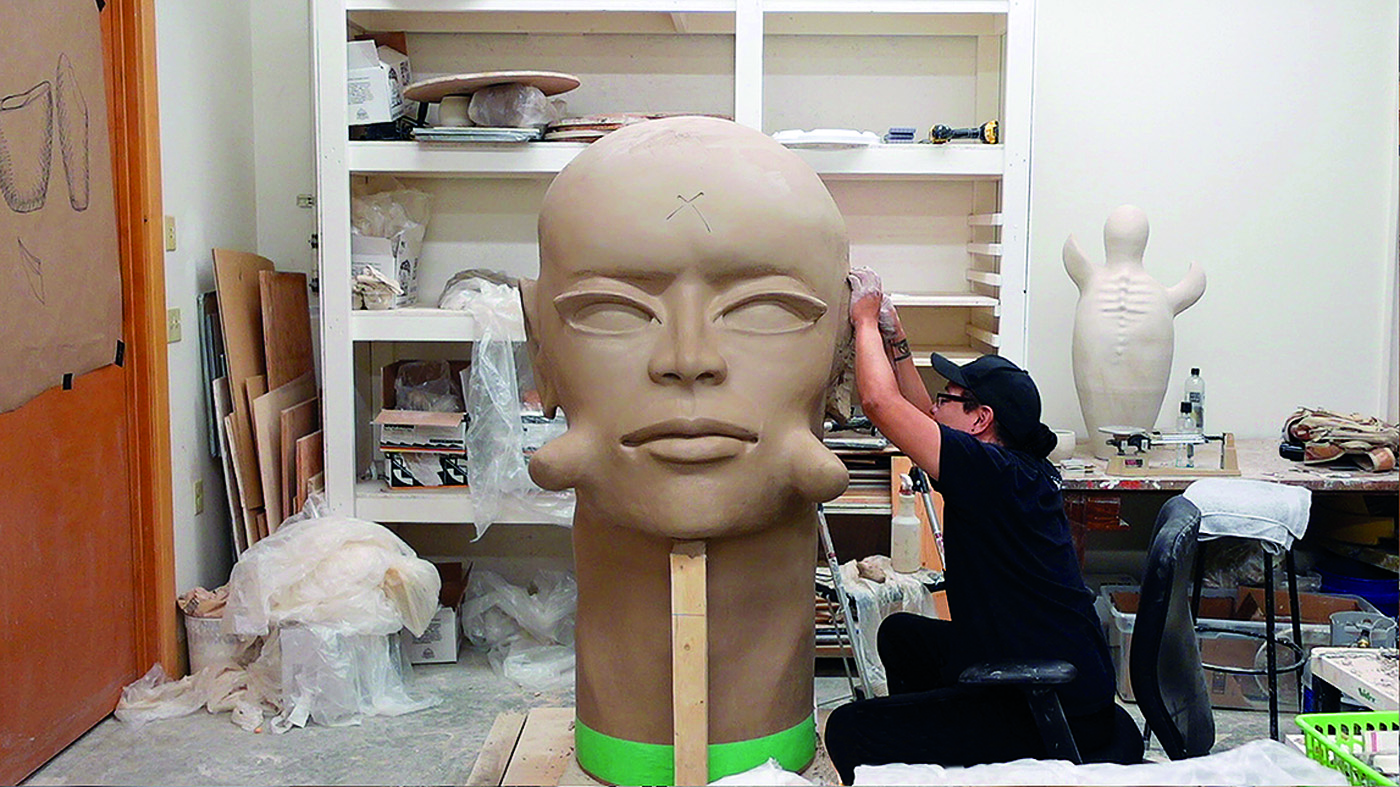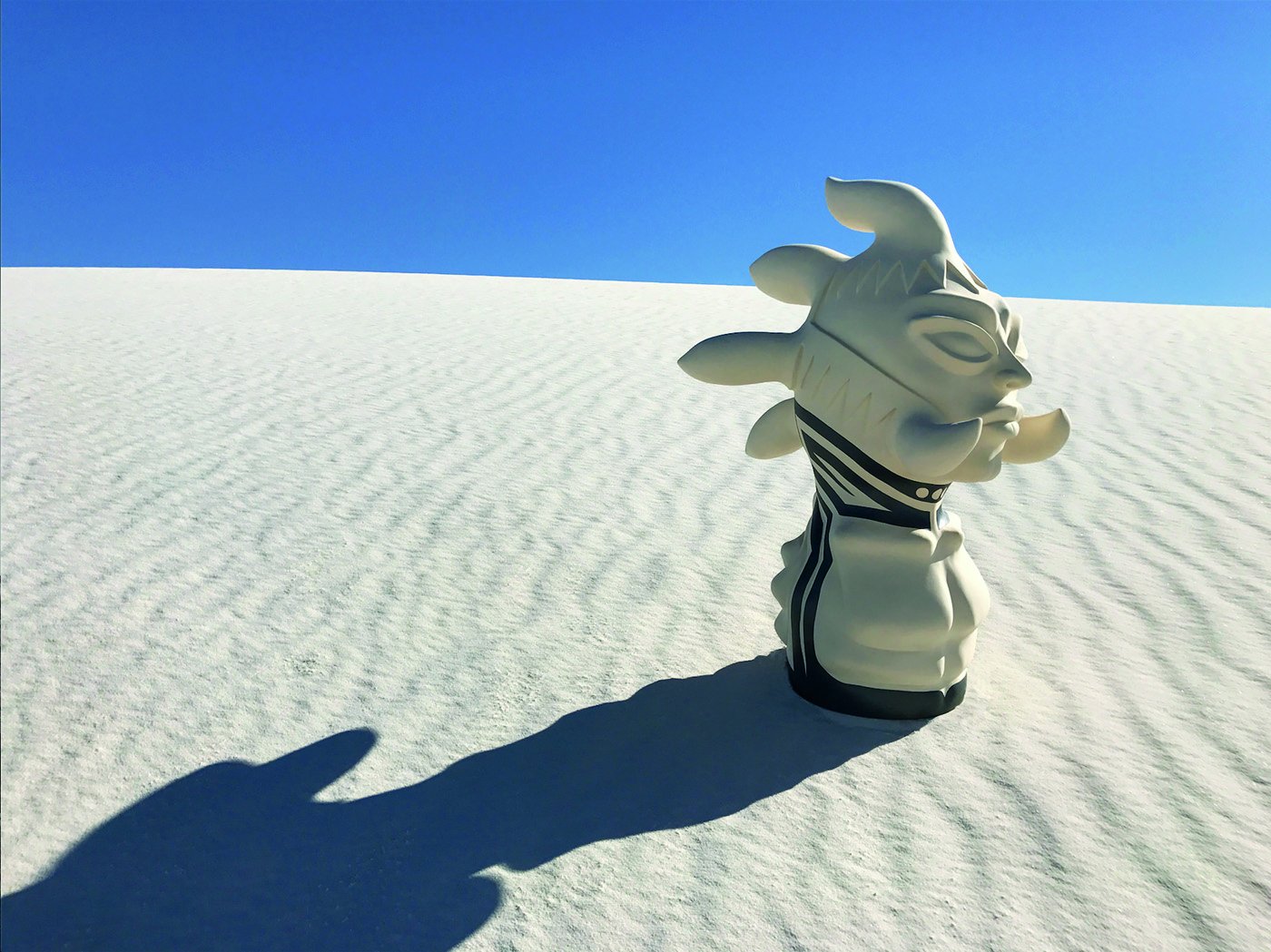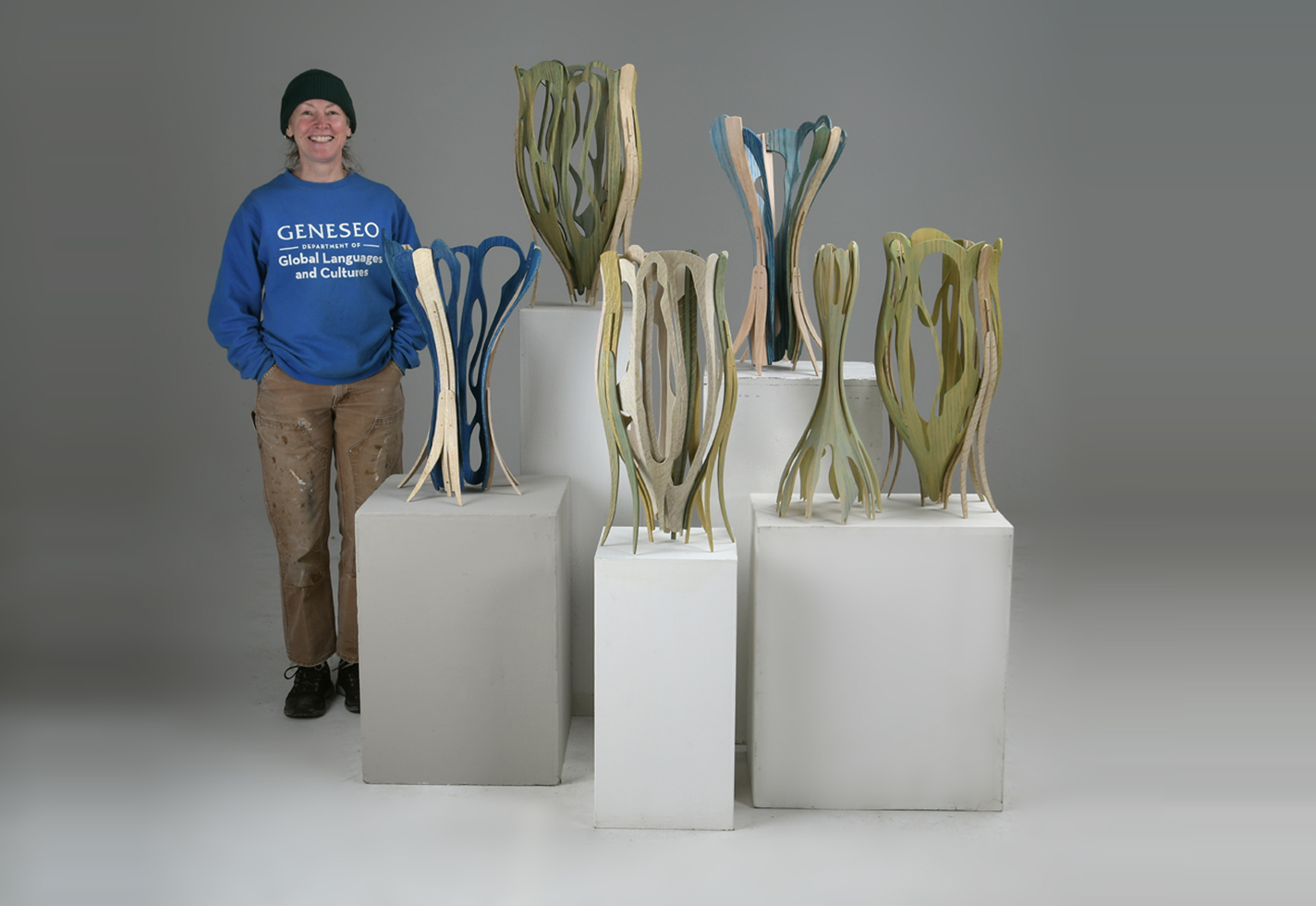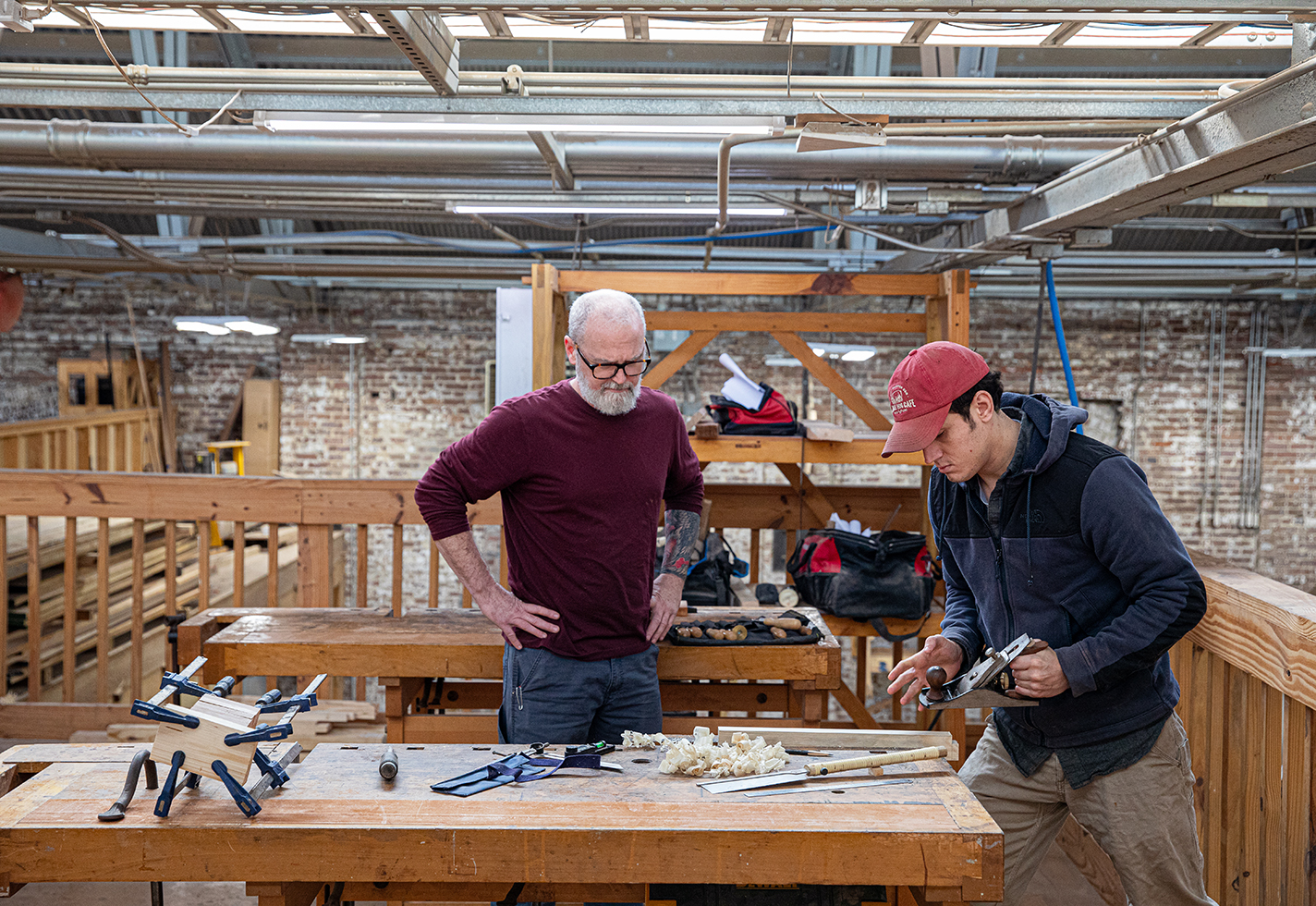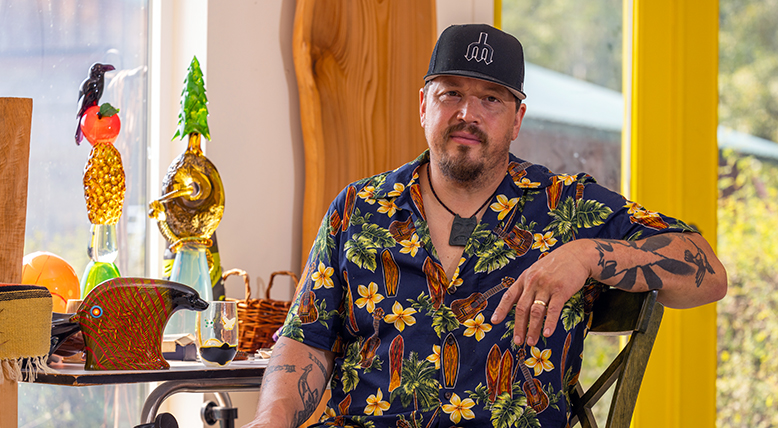When dug out of the earth, the clay at Cochiti Pueblo, New Mexico, appears reddish brown, the chunks like dusted chocolate truffles. Virgil Ortiz, who was born and lives in this community of the Cochiti people, situated between the cities that Spanish colonizers named Albuquerque and Santa Fe, has been digging into this rich earth since his childhood. As did his ancestors before him, the 53-year-old shapes the harvested clay into pottery pieces, only his have a distinct sci-fi bent: striking vessels in black and creamy white carry faces of imagined nomads in gas masks, surrounded by geometric designs of traditional Cochiti potters; majestic sculptures immortalize fictionalized warriors in futuristic regalia. Creating these time-bending artworks is a way for Ortiz to record stories and traditions. In carrying forth this knowledge, he also affirms the strength of Cochiti Pueblos in the wake of the Spanish invasions and ongoing settler-colonialism.
“Clay is Earth Mother,” Ortiz says. “It gives me the opportunity to have a voice. When I talk about any subject matter, whether past, present, and even future, it’s a prayer to make sure that story stays alive.” For the past two decades, the topic that has preoccupied Ortiz is the Pueblo Revolt of 1680, an uprising of Pueblos, including the Cochiti, to overthrow the Spanish in what is now New Mexico. Considered the most successful revolt by Native Americans against European colonial powers, it led to 12 years of independence, with Pueblo Indians driving out colonizers who had enslaved them, forced them to convert to Catholicism, and suppressed their ways of life. For Ortiz, the righteous revolution is a story of resilience. “We’re strong,” he says. “We didn’t lose our ways, and we keep not only art, language, but the word of our ancestors alive.”
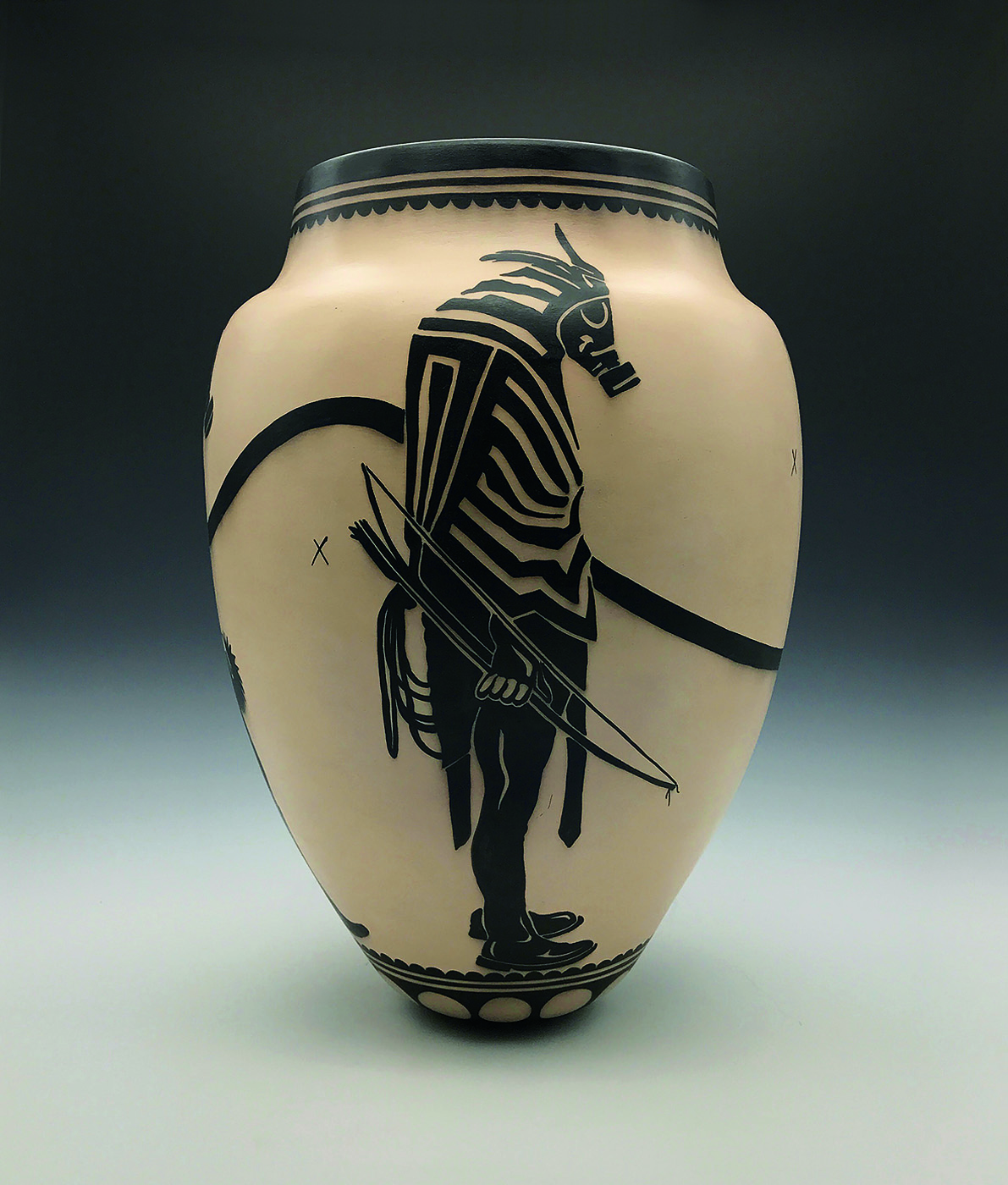
This storage jar, 2018, shows a Venutian soldier wearing a gas mask due to environmental destruction, 17 x 12 in.
